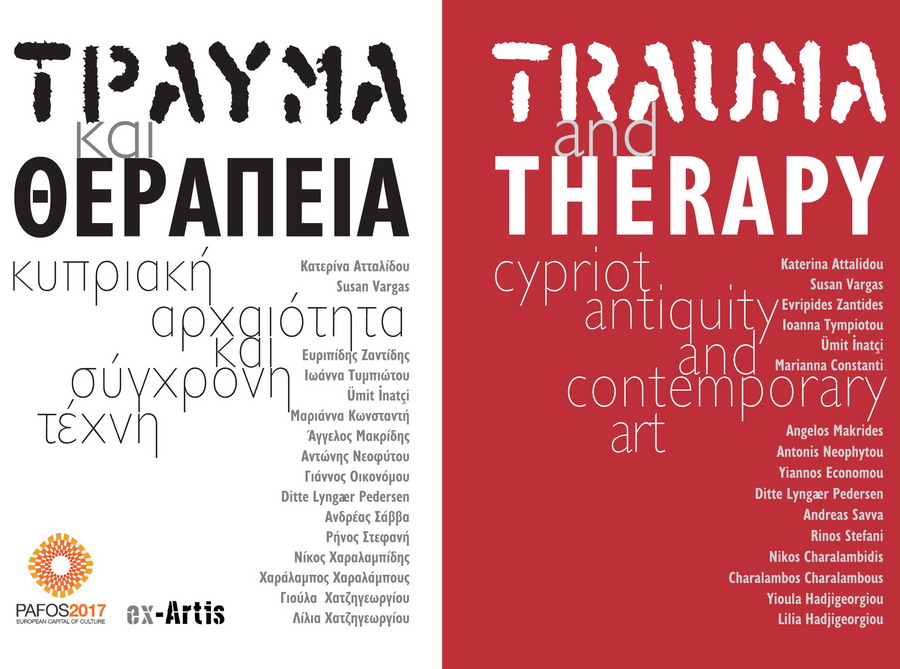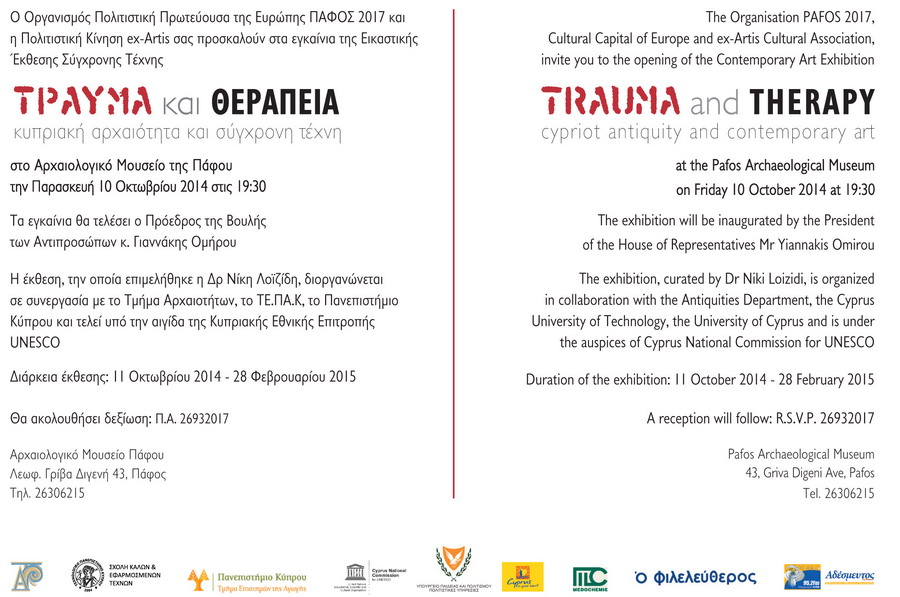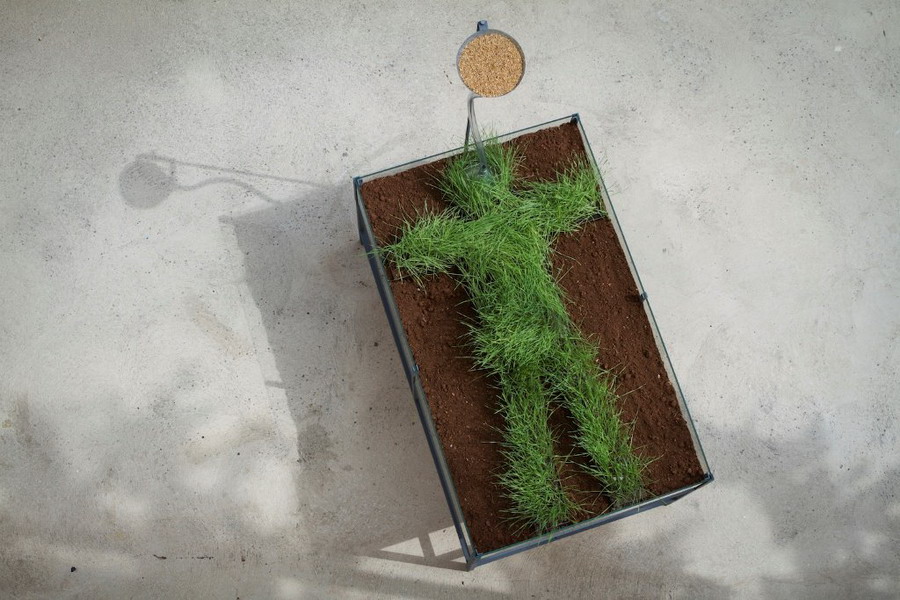Cypriot Antiquity and Contemporary Art
At the Pafos Archaeological Museum
Opening: Friday 10 October 2014 at 19.30
The exhibition will be inaugurated by the President of the House of Representatives Mr Yiannakis Omirou. Duration of the exhibition: 11 October 2014 – 28 February 2015




Homo Triticus
Inside the window displays of Archaeological Museums, we often come across exhibits which don’t fascinate us because of their artistic excellency, but because of their ability to connect us with the everyday living of people from thousands of years ago. I am referring to simple tools and utensils of domestic use, tools and constructions for growing the land, and to those tiny fossilized seeds of wheat or other kinds of cereal. That is precisely where the awe and the admiration for a very distant cultural past give place to a feeling of deep understanding and familiarity, which is based on the instinct for self-preservation and the strive to survive, something we share throughout the centuries. We think that they too, just like us (without me being sure that we are on the right track), under very different and adverse conditions, strived to improve their everyday lives.
Rinos Stefani is the only artist who wished to combine the two meanings of the verb ‘therapevo’ (θεραπεύω), by creating a most imaginative construction and giving it the title Homo Triticus. As an artist, he himself cures art and his art (the particular work) associatively activates a total of symbolisms related to the cycle of land fruition, the determining character of the cycle of human life, but also to figures related to his previous work, like the cross-shaped dancers and masks. For an artist whose first toys were made of water and earth (clay), the selection of exhibits that would inspire him could be none other than the room with the exhibits of the Neolithic period. In that room, there is a window display with seeds cultivated by ancient Cypriots, and a construction which resembles a epitaphic table whose upper part is made of a frame-grave of earthly material in which lays a human skeleton from the year 3000 BC from Lemba. As he says, the conception of the idea behind Homo Triticus starts from the combination of these two exhibits. However, in relation to them, Stephani’s installation is closer to a dialogue than a juxtaposition of opposites. The planted (with wheat seeds) little green man is wearing a mask-funnel connected to a bigger funnel filled with wheat seeds through a plastic pipe. The funnel is placed up high with a metallic stick, alluding to an I.V. tube over a patient’s bed in a hospital. Life and death, the rebirth of nature and decay, illness and fruition, coexist within the very same, eternally repeated cycle of universal sowing.
Dr. Niki Loizidou
Professor of Art History and the exhibition’s curator